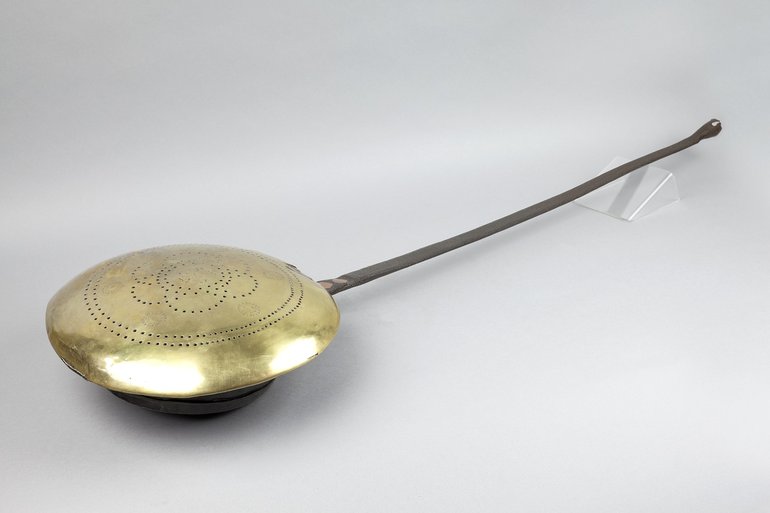Stephanie Appleton is a doctoral researcher in the History Department, University of Birmingham.

BOY: Mine host Pistol, you must come to my master,
and you, hostess: he is very sick, and would to bed.
Good Bardolph, put thy face between his sheets and
do the office of a warming-pan. Faith, he’s very ill. (Henry V Act 2, Scene 1)
Nowadays on those cold winter nights (or, indeed, as has been the case recently, chilly summer evenings) we have the luxury of climbing into a pre-warmed bed. Many people take a hot water bottle to warm their feet, while an electric blanket can be switched on in advance to warm the whole bed, ready for a snug night’s sleep. Both of these devices rely on modern technological advances and inventions; the rubber of the hot water bottle safely contains the boiling liquid, while the harnessed power of electricity heats the blanket and warms the bed.
Shakespeare and his contemporaries, however, did not have access to either of these devices: a warm bed necessitated the use of a warming pan like the one pictured here, a seventeenth-century example in the collection of the Shakespeare Birthplace Trust. The object has a long handle, to ensure a safe distance is kept from the hot contents of the pan at the end, which has a copper bottom and a brass hinged lid. The pan would be filled with hot coals or ashes and then placed into the bed between the sheets, the large copper bottom ensuring effective heat transfer from the hot ashes inside the pan to the bed clothes.
The quote above, from Shakespeare’s Henry V (1598), makes a humorous link between Bardolph’s bloated, red face, a symptom of his dissolute lifestyle, and the red hot pan of the warming pan. Such imagery would have been instantly recognisable to all members of Shakespeare’s audience, due to the near-ubiquitous nature of this domestic object: there would have been one in all but the poorest households. Indeed, warming pans appear frequently in inventories of the period, and we find several such examples in the probate records of Stratford-upon-Avon. (See Jeanne Jones, Stratford-upon-Avon Inventories, 1538 - 1699, (2 vols), Stratford-upon-Avon: Dugdale Society, 2002.) For example, the 1603 inventory of Richard Boyce, a Stratford tailor, lists a warming pan in the ‘spence or buttre’ [buttery], a service and storage area in early modern houses much like a pantry, traditionally set aside for the storage of beer and other household necessities. Meanwhile, the inventory of mercer William Smith, taken in 1626, lists in the ‘upper chamber’, along with beds and bedding, his ‘worming pann’, where it may have been used to warm his bed during his final illness.
